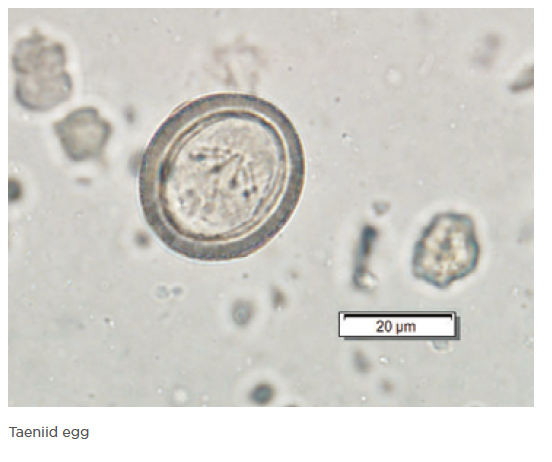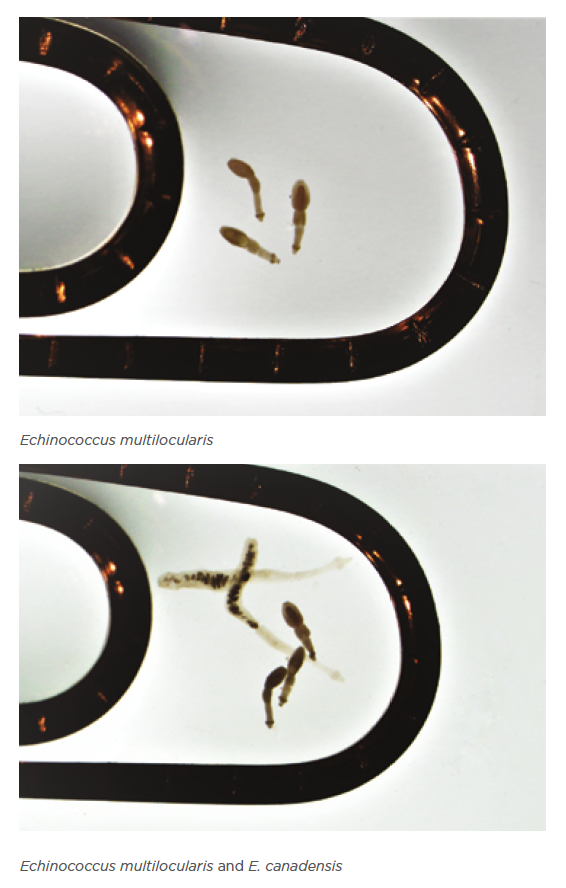Cestodes
Pets at high risk for cestodes are those that may consume fleas, raw fish, rodents, or the organs of cervids and domestic livestock.
Cestodes
Risk of exposure to cestodes should be assessed through a good history (focusing on flea control, diet, and access to wildlife and fish intermediate hosts) and through fecal diagnostic testing (although false negatives are common using fecal flotation methods, there are new fecal PCR and coproantigen methods that offer potentially higher sensitivity). Pets at high risk for cestodes are those that may consume fleas, raw fish, rodents, or the organs of cervids and domestic livestock.

Of particular concern are the zoonotic cestodes Echinococcus granulosus and E. multilocularis. E. granulosus (strains G1-G3) is not present in livestock in Canada. Strains of E. granulosus established in Canada (G8 and G10) are known as E. canadensis, and are present wherever cervids (moose, caribou, elk, and deer) and wolves/coyotes can maintain the life cycle (most of Canada except the Atlantic provinces). E. multilocularis is present in most of western Canada and in southern Ontario. In high risk dogs in areas endemic for Echinococcus spp., monthly cestocidal treatments are recommended for the protection of public health. Products used for the prevention of heartworm, fleas, ticks, or gastrointestinal nematodes have no efficacy against cestodes (except for combination milbemycin/praziquantel in cats and dogs), so a separate cestocidal drug must be administered. The only anthelmintic with approved efficacy against adult cestodes of Echinococcus spp. is praziquantel (note: not all products containing praziquantel are specifically labeled for Echinococcus treatment, so be sure to read the label carefully). Dogs with the larval stage of E. multilocularis should be treated with both an adult cestocide (praziquantel) and a larval cestocide (such as albendazole).

